Archived Blog Posts
Maintain Your Swamp Cooler To Prevent Mold
10/29/2021 (Permalink)
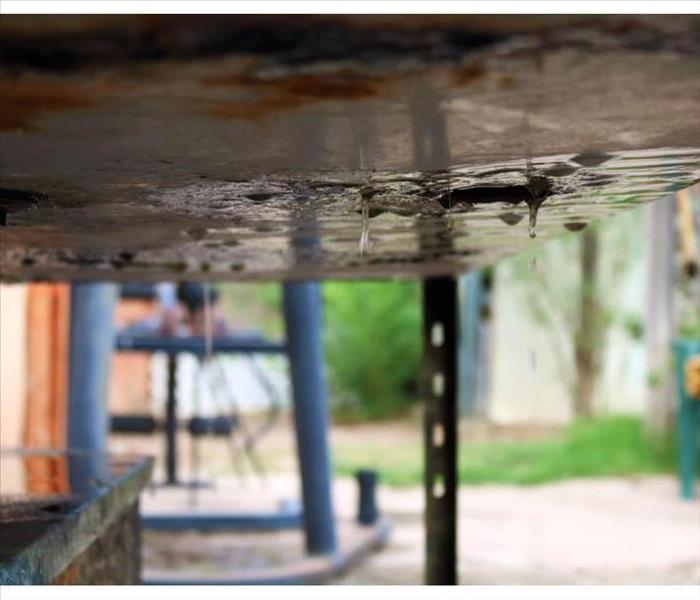 Avoid mold problems from a dirty or leaking swamp cooler.
Avoid mold problems from a dirty or leaking swamp cooler.
To Prevent Mold, Keep Your Swamp Cooler Clean
In hot, dry climates, swamp coolers, or evaporative coolers, are a great way to cool your home. As the water in the cooler evaporates, it absorbs heat from the air and adds water vapor. However, in Placida, FL, where humidity sometimes rises, it’s important to pay attention to the barometer. If humidity is too high, the water won’t evaporate and mold growth can develop in your swamp cooler. If this happens, it’s critical you clean the mold out of your evaporative cooler before running it again.
To avoid mold problems from a dirty or leaking swamp cooler, it’s important to do regular maintenance on your unit. Follow these basic guidelines to keep your cooler working and prevent mold.
1. Check Water Levels Regularly
Check the water level in your evaporative cooler regularly. If the water level is too low, your cooler may not be able to cool the air effectively. If the water level is too high, a leaking swamp cooler can become a source of chronic moisture in your home, creating the perfect conditions for mold to grow.
2. Keep the Exterior Clean
You should wipe down the outside of your swamp cooler every couple of weeks. A surface build-up of dust or grime can interfere with its cooling abilities. Wiping it down can also clean off any pollen spores that may have settled there, waiting for the right conditions to grow.
3. Clean the Water Tank
It’s a good idea to clean out the water tank periodically. This removes any build up of sediment, lime or organic material that might serve as a breeding ground for mold.
4. Change the Cooling Pads
The cooling pads are one of the first places mold can grow. Inspect them regularly and replace them if they’re cracked or dirty. If you notice a musty smell coming from your swamp cooler, you may have mold. Changing the pads and cleaning the tank should help.
While swamp coolers can be an economical cooling option in Placida, FL, some care is needed. Don’t run your cooler on humid days and perform regular maintenance to prevent a dirty or leaking cooler from causing mold to grow.
3 Ways to Protect Against Dryer Fire
10/25/2021 (Permalink)
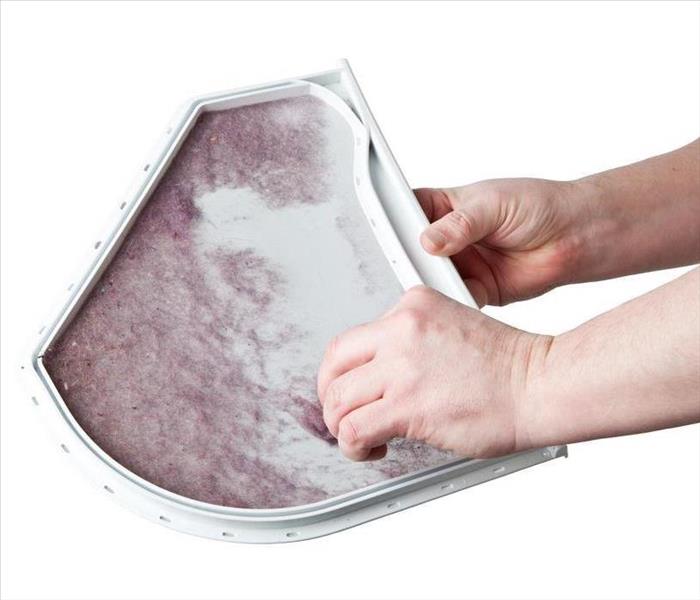 Your dryer’s lint screen must be cleaned every time you do a load of laundry.
Your dryer’s lint screen must be cleaned every time you do a load of laundry.
3 Ways to Prevent Dryer Fires
You may not give much thought to your dryer as a fire hazard. You simply put wet clothes in, turn it on and take them out when they are dry. Fire restoration specialists, however, see a lot of fire damage that started as a lint fire. To protect your home in Boca Grande, FL, from dryer fire, you should remove lint before every use and have a proper maintenance schedule for your dryer.
1. Lint Removal
Your dryer’s lint screen must be cleaned every time you do a load of laundry. Remove the screen and wipe your hand across it. A ball of lint forms as you do this, making it easier to remove the rest of the lint from the screen. Every few weeks, it is a good idea to wash the screen with water to remove any residue that has collected on it. Vacuuming out the screen vent before you replace the screen can help prevent lint fire by keeping lint from building up in the area.
2. Vent Cleaning
The lint screen is not the only place where lint collects. Lint is also exhausted through the hose attached to the back of the dryer and the vent in the wall. Every six months, you need to clean the hose and the wall vent. This helps prevent a buildup of lint that can ignite a fire in your home in Boca Grande, FL, causing extensive fire damage.
3. Dryer Dusting
The third place that lint accumulates is in the body of the dryer itself. Approximately every six months, unplug the dryer, open the back of it and clean out any lint that you see. You can use your hose attachment on your vacuum and a dry cloth to dust the inside of the dryer.
Everyone can remember to clean the lint screen, but if you want to make sure the job is done thoroughly, you can hire professionals to clean the inside of the dryer and the vents. No matter who does it, though, keeping a rigorous maintenance schedule for your dryer helps to prevent lint fire.
Burns at Work: Is This Burn Minor or Major?
10/20/2021 (Permalink)
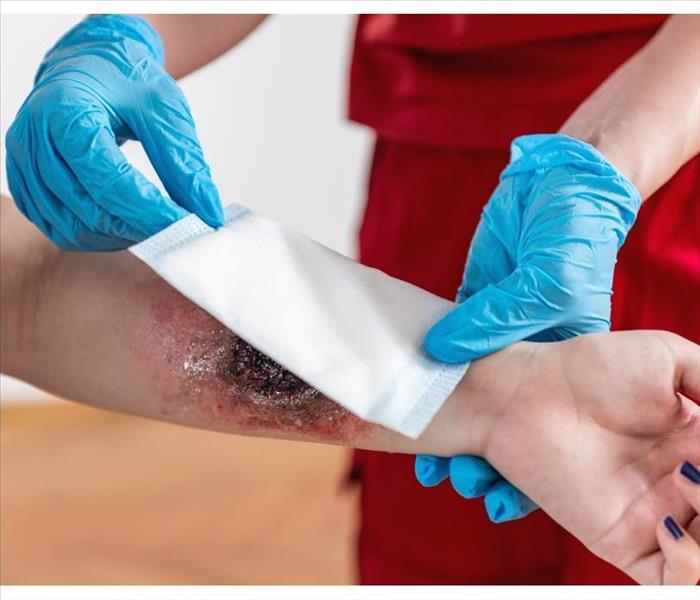 Do some burn first aid to help relieve the pain.
Do some burn first aid to help relieve the pain.
Basic First Aid Steps
If a fire breaks out in a commercial building in Rotunda West, FL, the fire damage can vary greatly. You may have to deal with structural problems, charred equipment and personal injuries. A fire repair crew can help with most of the property damages, but you may need to get help from a different source for personal injuries. If an employee gets burned at work, it may be a good idea to take quick action. You may be able to take care of minor burns on site, by following basic first aid steps:
- Cool the burn.
- Protect the blisters.
- Apply lotion.
- Add a bandage.
- Provide pain relief.
However, major burns often require medical attention as soon as possible. How do you tell the difference?
Major Burns
A major burn looks different than a minor burn. This injury is deep and large. To qualify as major, it should be over three inches in diameter or cover certain parts of the body, including hands, face, buttocks, groin or feet. The appearance of the skin will be dry and leathery. You may also notice the fire damage charred skin and created patches of colored skin. Usually, the colors can include white, black and brown. If a burn falls into this category, you may want to do some first aid until a first responder arrives. However, on-site treatment is not enough for this injury.
Minor Burns
A minor burn is much more superficial than its more serious counterpart. The redness associated with it may remind you of a sunburn rather than a charred piece of skin. The injured employee will feel pain. The affected area may have blisters but should be no larger than three inches in diameter. If a burn falls into this category, you can do some burn first aid to help relieve the pain. You may still want to send your employee to the doctor, but it's not as vital.
Fire damage often affects buildings, but it may also affect your employees. Knowing how to react to personal injuries can help you make smart decisions.
How Do You Stop a Toilet That Won’t Stop Flushing?
9/26/2021 (Permalink)
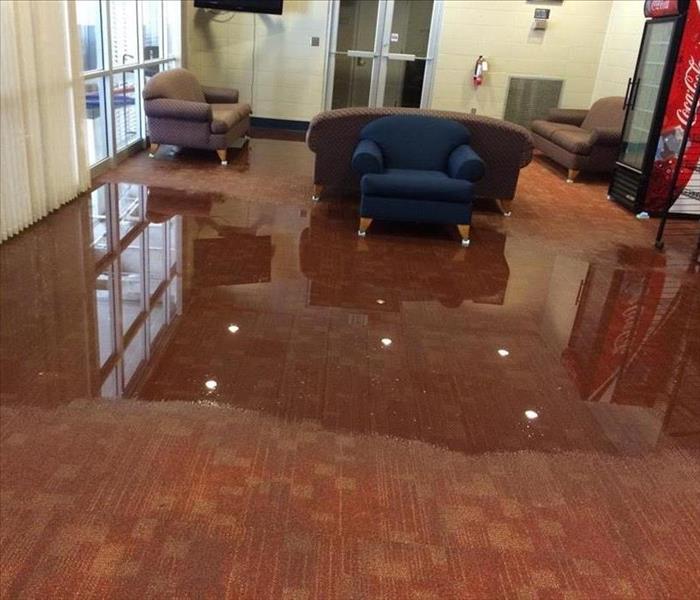 Toilet overflow, while common, can be a nuisance to your business, especially when it hinders efficiency.
Toilet overflow, while common, can be a nuisance to your business, especially when it hinders efficiency.
Toilet overflow, or a toilet flood, can be a common occurrence in many large business operations. Due to the extensive use of restrooms in these types of facilities, toilet mechanisms can become worn relatively quickly. If you are dealing with a toilet that is continuously running or flushing, you may have a problem with the gasket. To stop a toilet from constantly running, you may want to follow these four steps:
1. Shut off the Water Supply
The first thing you want to do is shut off the main water supply to the toilet that is causing the problem. Locate the slot for the flathead screwdriver on either the left or right side of the toilet and turn it to shut off the water.
2. Remove the Lid of the Flushing Mechanism
On top of the pipe running up the back of the toilet, there is a large bolt securing the lid of the flange and its components. You can loosen this slightly to remove the cover and expose the flange gasket.
3. Remove and Clean the Gasket and Weep Hole
You may notice that the gasket is covered in sediment along with the weep hole, and this is potentially causing your toilet overflow problem. Remove the gasket and clean it and the weep hole thoroughly before returning it to the toilet and testing the flow.
4. Replace the gasket
If cleaning the gasket did not resolve your issue, you may want to replace the gasket altogether. Replacing the gasket is a simple enough job; however, you may want to seek an experienced plumber in the North Port, FL, area if you have further issues.
Toilet overflow, while common, can be a nuisance to your business, especially when it hinders efficiency. The above steps may help resolve the most common problem in these instances; however, there may be times when it’s best to get a professional’s opinion.
The Right Way to Clean Your Home Post-Flood: Need-To-Know Requirements
9/19/2021 (Permalink)
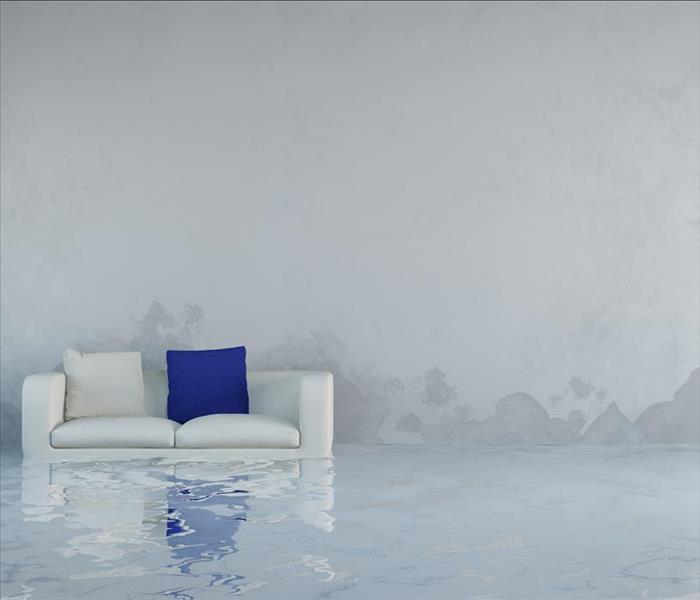 When it comes to cleaning up after a flood, there is a right way and a wrong way to go about it.
When it comes to cleaning up after a flood, there is a right way and a wrong way to go about it.
Though you should never attempt to flood clean on your own, you should be aware of the cleaning requirements that your Englewood, FL, flood cleanup restoration team uses. Requirements are in place for a reason—to keep professionals and homeowners safe and to prevent further damage. Some CDC recommendations that professionals abide by are as follows:
• Block off the contaminated area.
• Don protective clothing.
• Discard contaminated materials.
• Use commercial flood disinfectant.
• Keep the area well ventilated.
• Dry out the area.
Safety Is Key
When you work with a professional flood restoration team, you'll notice that each member of the team takes extra precautions to keep both themselves and occupants of your home safe. Floodwaters often contain harmful contaminants, including but not limited to human waste and harsh chemicals. For this reason, two cleaning requirements that all experts adhere to are to block off contaminated areas and don protective clothing.
Discard What Cannot Be Cleaned
This is probably one of the hardest requirements for homeowners to abide by, as it often involves getting rid of favorite items. Carpets, furniture, curtains, and other porous materials that were in the flood zone likely need to be trashed and replaced.
Use Commercial Disinfectants
Standard house cleaners such as 409 and Tide aren't strong enough to kill the bacteria that float in on floodwater. If you want to ensure that your home is safe to be in, let your water damage cleanup crew wipe down all surfaces with powerful, commercial-grade flood disinfectant.
Get Clean Air Flowing
The air in a room affected by floodwater is bound to be moist, and moist air breeds mold spores. To minimize the risk of mold growth, your flood team is likely to open the windows and use industrial-grade fans to get clean air flowing through. This may also help to speed up the drying process.
When it comes to cleaning up after a flood, there is a right way and a wrong way to go about it. Talk to your Englewood, FL, flood damage restoration team regarding proper cleaning requirements for flood cleanup.
Establishing Proper Containment During Mold Remediation
9/14/2021 (Permalink)
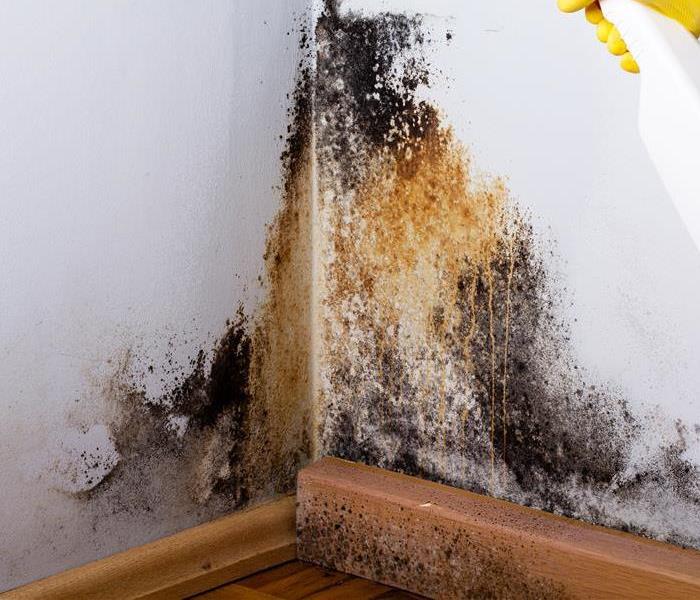 Proper containment helps you isolate the problem so that remediation experts can clean quickly.
Proper containment helps you isolate the problem so that remediation experts can clean quickly.
There are many steps that mold remediation professionals take in your home in Englewood, FL, to get rid of mold contamination. One of the first things they do is to seal off the area. Proper containment of the affected items and areas is essential. It prevents the spread of mold into other sections of the home and thus keeps the problem from getting larger.
Item Isolation
All materials that are at risk of contamination must be separated from the home. For example, if the problem is in your children's bedroom, technicians will bag everything that is wet, moldy, or musty:
• Bedding
• Stuffed animals
• Toys
• Clothing
• Shoes
• Books
Everything must be contained in plastic, sealed bags. If the items can be salvaged, they are cleaned and returned to the home once the whole remediation process is done. If they cannot be salvaged, the bags keep the mold contamination from spreading so you can dispose of them as you would dispose of regular trash.
Air Flow
Mold spores are airborne, so cutting off airflow in your home is vital to keeping a mold problem contained. Turn off the HVAC system and all fans. Close all doors and windows that allow air to circulate throughout your home. Try not to give the multiplying mold spores a free ride to a new destination.
Location Seal
Finally, the contaminated area must be sealed off. Specialists use sheets of polyethylene to line the area, sealing the seams with duct tape or some other industrial adhesive material. The only openings in this covering are the slits technicians use to get in and out of the area.
Mold contamination may seem like a pervasive issue that cannot be resolved, particularly if it is the result of a larger problem such as extensive water damage. Proper containment, however, helps you isolate the problem so that remediation experts can clean quickly without worrying about whether they are causing more harm than good.
When Can Employees Return to Work During Restoration?
8/31/2021 (Permalink)
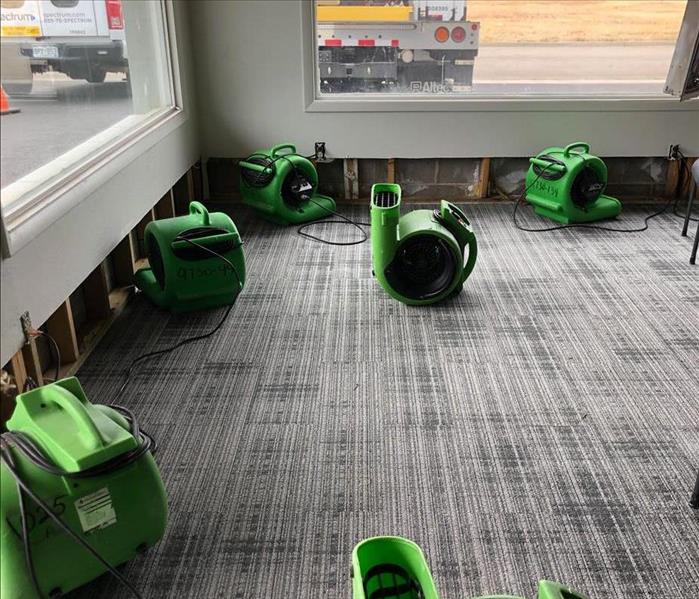 Call SERVPRO for any flood or water damage in your business.
Call SERVPRO for any flood or water damage in your business.
When Will Employees Be Able To Return to Work During Restoration?
Once the flood waters have receded, most people want to return to their businesses. They want to rebuild as soon as possible. As a business owner, you recognize the need to stay away for a while, but the more time you are out of the office, the more money you could potentially lose. In addition to losing money yourself, your employees can have a dent put in their wallets. The question most people have is when they can return to work. Do you have to wait until the building is completely restored or can your employees be present through the flood cleanup?
1. Black Water Removal
Standing water becomes the perfect environment for bacteria and mold growth. If the floodwaters caused any sewer backup, the cleanup is first on the to-do list. No one can come into the building until this is completed. The exception is if they have the proper equipment and are a part of the cleanup crew. A professional restoration company should handle black water.
2. Demolition and Disinfection
Once the specialist removes the water, you can use his or her help to figure out what can be saved and what needs to be thrown out. Often you need to remove drywall, carpeting and other porous materials before you can start to rebuild. These materials are difficult to clean and can be destroyed by black water. Your employees should not be present until after this process is completed. Once the demolition is done and everything has been disinfected, you can begin to think about returning to the regular workday.
3. Return to Work
Once everything has been cleaned, your employees can return while you are rebuilding. You can use air filtration devices to help the air quality while the restoration company does its job. Once you are in the rebuilding process, as long as there is no dangerous construction going on, your employees should be safe.
During a flood cleanup, it can be difficult to allow your employees to return to work right away in your Englewood, FL, business.
What You Need To Know About Lawn Slime
8/31/2021 (Permalink)
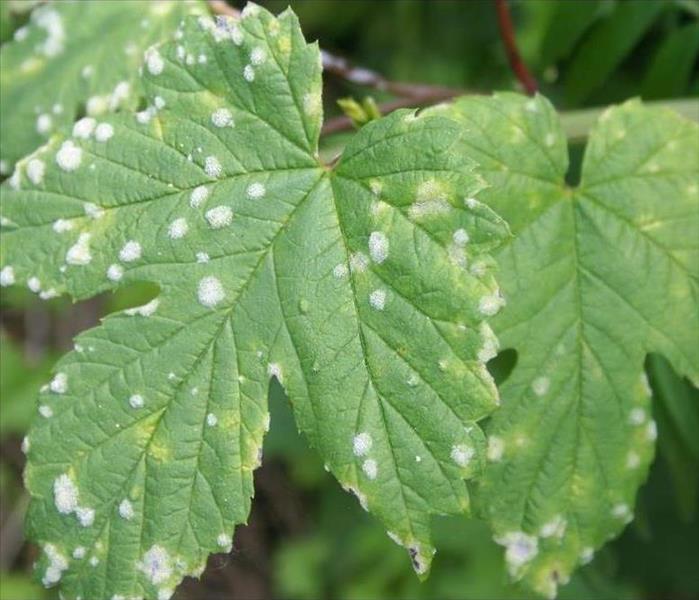 You can call SERVPRO to help you treat the fungus if it appeared after a flood.
You can call SERVPRO to help you treat the fungus if it appeared after a flood.
Lawn Slime: What You Should Know
Your Manasota Key, FL, home's lawn can be a major factor contributing to the beauty and curb appeal of your property. However, problems such as lawn slime can make it look sickly or unappealing. This slime, which may appear unexpectedly, can spread quickly if not treated. Before you attempt to battle this fungus, there are a few facts you may want to know about it beforehand.
It Feeds on Organic Matter
Much like other types of fungi, yard slime does not need sunlight to grow. Instead, it feeds on organic matter in your yard, which may include the following:
- Dead leaves
- Decaying twigs
- Dead turfgrass
Removing these food sources may help you reduce the spread of this outdoor mold, especially during humid weather, as humidity can accelerate mold growth.
It Is Usually Not Related to Other Lawn Problems
Unlike encroaching weeds, bald patches and problems that cause grass to thin or yellow, lawn slime is typically an isolated issue and not related to other yard illnesses. It grows only when there is a food source available, so starving it out can be one of the best defenses against this fungus.
You Can Treat It Several Ways
Fortunately, there are several different tactics you can use to treat this backyard fungus. One is to rake up all the thatching in your yard, along with dead leaves and twigs, to reduce the food supply. Avoid overwatering your lawn, and allow the sun to dry up the mold. You can call in a storm cleanup and mold remediation company to help you treat the fungus if it appeared after a flood. If the mold grows in dark, shady areas, consider pruning your trees to allow more sunlight in and ensure that no sprinkler water pools in these spots.
Dealing with lawn slime at your Manasota Key, FL, home can be a frustrating experience. However, when you know why it grows, what feeds it and how to treat it, you can take the proper steps to heal your yard and make it healthy and green once again.
3 Types of Water You May Encounter After a Flood
8/31/2021 (Permalink)
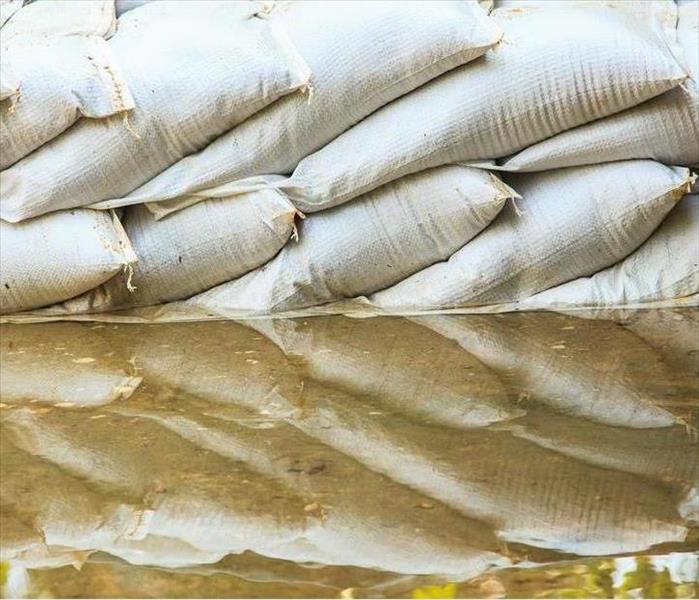 While not every type of flood causes contaminated water, understanding the possible dangers can help keep you safe.
While not every type of flood causes contaminated water, understanding the possible dangers can help keep you safe.
Three Types Of Water You Might Come Across After A Flood
Flood waters can come from a variety of sources to affect your North Port, FL, home. From heavy rains to a malfunctioning washing machine or water heater, the types of flood waters you may encounter might be harmless or contaminated water that could be dangerous to your health. Knowing how to grade flood water and whether you should try to deal with its removal on your own can protect your well-being, no matter the source of the flood.
1. Clean Water
Clean water floods usually occur when sanitary water overflows from a source that delivers drinking or other types of treated water. For example, if the water supply line to your kitchen sink were to break, the resulting flood would be graded category 1, which contains no contaminants or harmful chemicals. However, clean water floods can deteriorate quickly, especially if the standing water is allowed to stagnate.
2. Grey Water
You might encounter grey water if your dishwasher or washing machine malfunctions and causes a flood. While grey water is not necessarily dangerous, it may contain cleansers and detergents that can irritate your skin or eyes after prolonged contact. Category 2 flood waters may also contain human urine from flushed toilets, so you may want to wear a protective mask and gloves if you must touch this contaminated water.
3. Black Water
Flooding can cause sewers to back up and overflow. When the offal from the sewers mixes with flood waters, this creates what is called black water. Category 3 water can contain human and animal feces, drowned animal carcasses, medical waste and urine. It is important that you let a storm cleanup and restoration company remove this water from your home if it should enter, as only qualified flood technicians have the equipment and know-how to drain and dispose of it safely.
When flooding occurs in your North Port, FL, you might encounter different grades of water. While not every type of flood causes contaminated water, understanding the possible dangers can help keep you safe when you need to deal with a flood at your home.
If a Storm Cancels Your Flight
8/4/2021 (Permalink)
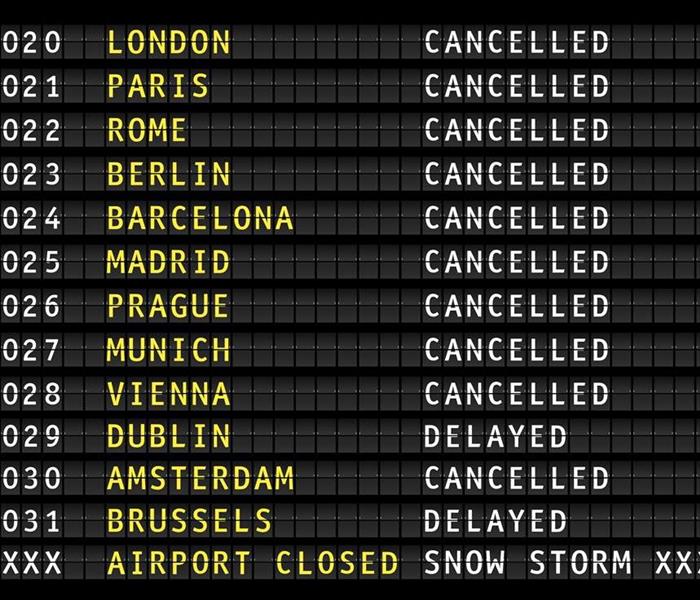 Canceled flight due to storm.
Canceled flight due to storm.
Canceled Flight Due To A Storm
Coping with the fallout of storms can be a nuisance whether you are at home or on the road. Seasoned travelers flying to or from Manasota Key, FL, understand that a weather delay or a canceled flight is always a possibility. However, they also understand that there are proactive and reactive moves to be made when Mother Nature interferes with the best-laid travel plans.
Proactive Moves
Wise travelers have learned the ins and outs of air travel. Sometimes the best defense is a good offense.
• Stay informed about the weather forecasts for your points of departure and arrival.
• If at all possible, avoid travel when inclement weather is predicted.
• Try to book direct flights to avoid layover cities where the weather can factor into your connection’s timeliness.
• Leave early to avoid traffic and airport security delays even if your flight is running late.
• Pack lightly and carry your bag on the plane; retrieving checked baggage can be complicated if your flight changes.
Reactive Moves
If your flight is canceled and following proactive storm tips hasn’t helped, don’t despair. There are a few ways to bounce back from a canceled flight.
• Call the airline as opposed to lining up at the airline’s service desk in the airport. You will be served more quickly over the phone.
• Make the most of what airlines are willing to offer. Ask them to help you rebook or reimburse you for a connecting flight.
• Ask for reimbursement for food or lodging if the delay is substantial.
• Ask for reimbursement for a rental car if driving is an option.
• Don’t lose your cool. Calm and persistent customers have more success in getting what they want than those who display anger.
The airline is not required to compensate you unless it bumps you because it oversold the flight. For a canceled flight due to a storm, you are simply rebooked.
Mold Remediation Has Never Been Simpler
7/23/2021 (Permalink)
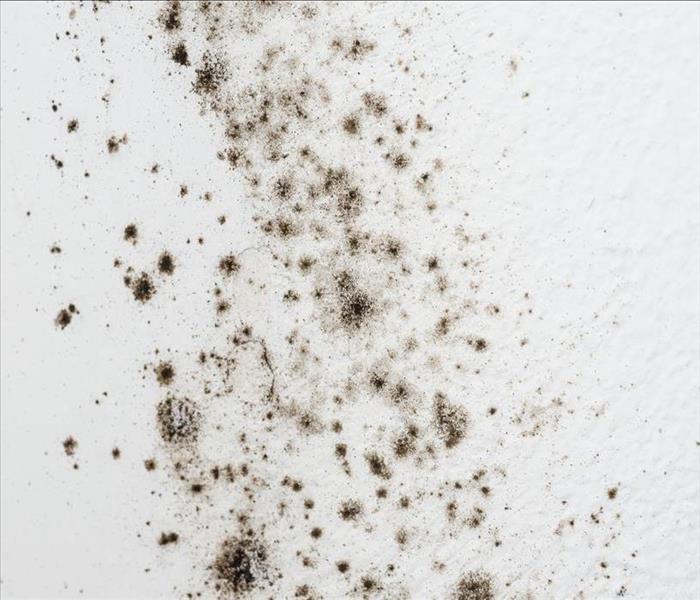 Mold damage in Englewood, FL.
Mold damage in Englewood, FL.
Like so many things, mold can be a benefit or a problem. The word itself sounds icky, but in fact, mold is everywhere, and most of it is harmless. However, having a noticeable black mold infestation in your business can turn customers away and even reduce employee productivity. The good news is that mold cleanup in Englewood, FL, has never been easier.
What Causes Mold?
Black mold outbreaks are caused by excess moisture. This can have multiple possible causes:
- Plumbing leak
- Roof leak
- Poor humidity control
What Is the Difference Between Mold Removal and Remediation?
Some companies advertise for complete mold removal, but that’s a load of baloney: There is no way to remove all mold. Legitimate companies know the science behind mold growth and focus on returning mold levels to an acceptable amount. A qualified restoration company has the training and knowledge to remediate mold in your business.
What Is the Mold Remediation Process?
It begins with an inspection and mold damage assessment. Remediation specialists will then contain the infestation and identify the source of the mold. Once the source has been eliminated, they will remove any mold and mold-damaged materials, like drywall and carpeting. Next, the professionals will clean up the mess and disinfect your business, and finally, they will restore it to its former condition.
What Equipment Will They Use?
Top mold removal companies have specialized equipment to identify and fix all levels of infestation. They may use specialized air scrubbers, filters and HEPA vacuums to create negative air chambers that contain the microscopic mold spores. Antifungal and antimicrobial treatments can eliminate colonies and prevent new ones from forming. Fogging equipment can also be used to deodorize your business.
What’s the Bottom Line?
If you suspect that black mold is growing in your business, you need professional advice. The entire procedure is tax-deductible, so look for the most qualified mold cleanup company in Englewood, FL, and cleanup should be a breeze. The longer you wait, the more difficult and expensive it will be.
4 Types of Smoke Remediation
7/22/2021 (Permalink)
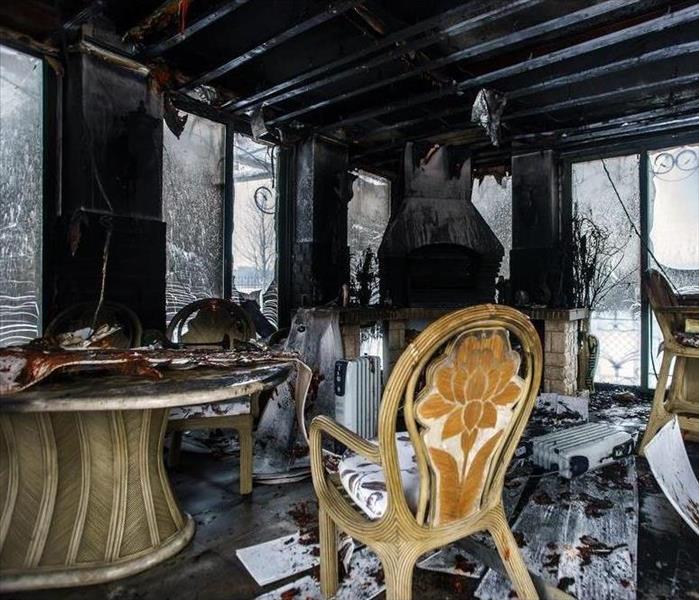 Smoke damage can cause permanent discoloration on all kinds of household materials, such as wall tiles, ceiling materials, wood and many others.
Smoke damage can cause permanent discoloration on all kinds of household materials, such as wall tiles, ceiling materials, wood and many others.
Types Of Smoke Remediation
Smoke cleaning is an important process after a fire has affected your Rotunda West, FL home. Soot and smoke can cling to the surfaces of your house as well as your belongings. If left unattended, the damage could further permeate your structure and become harder to fully remove. Your residential fire cleanup professionals may use various methods to clean up the smoke.
1. Thermal Foggers: When you hear about thermal foggers, you may think of pest control. However, this equipment can also help remove smoke odor. The technique recreates fire-like elements, such as pressurization and heat. The porous materials in your house pick up the deodorization materials in the same way they picked up the smoke odors.
2. Air Filtration Devices: Some air purifiers can help in the smoke cleaning process. The fine, professional-grade filters actually help catch the odor-causing particles. The filtration system can simultaneously help you deal with mold problems and excessive moisture in your home as well.
3. Ozone Machines: The smoke odor in your home could also be removed by an ozone machine. This equipment kills certain particles in the air to ensure your home is free of bad odors and dangerous airborne irritants.
4. Solvent Cleaners: Solvent cleaners help remove the physical signs of smoke damage. Your cleanup team may use wet and dry cleaners on various surfaces in your home. In some cases, the building materials in your home may actually have to be removed rather than cleaned. However, solvent cleaners can work to rid your house of soot and smells.
Smoke cleaning requires two different elements to be addressed. First, you have to worry about the unsightly soot that clings to your belongings. Second, you have to tackle the odor that permeates almost every surface in your home. When these two elements are addressed at the same time, you have a better chance of being happy with the restoration your home goes through.
How To Mitigate the Damage From a Sewer Backup
7/13/2021 (Permalink)
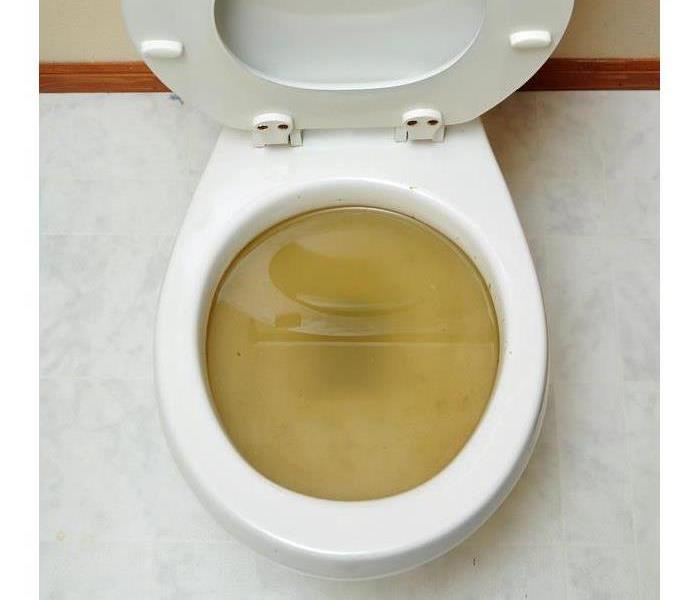 An overflowing toilet may indicate an obstruction somewhere further along in the sewer system.
An overflowing toilet may indicate an obstruction somewhere further along in the sewer system.
How Do You Treat Sewer Backup
It’s easy to ignore the importance of a properly functioning drainage system until major problems arise. Above-average rainfall, the introduction of debris, or a collapse within the piping system can prevent wastewater from moving normally through your sewer system. Should you find yourself in need of a home decontamination and sewer cleanup in Rotunda West, FL, there are a few key things to remember.
1. Act Quickly
Although clean standing water in a flooded basement may be no initial cause for alarm, over time, the lack of sufficient outflow can foster disease agents, and it deserves prompt attention. Black water, meanwhile, demands an immediate response in order to avoid long-term property damage. It's the most dangerous category of excess moisture and is often the result of a sewer backup or other source of chemical, viral, or bacterial health risks.
2. Relocate Your Belongings
Anything not affixed to the home should be moved to a clean, dry area with adequate air circulation. Where possible, use detergent or alcohol to disinfect and remove dirt. For insurance purposes, it may be prudent to photograph and document any visible damage.
3. Restore Drainage
A flooded toilet or gurgling sink may indicate an obstruction somewhere further along in the sewer system. In order for the water to recede, the blocked or damaged segment must be repaired or replaced so that sewer cleanup can begin. If the source of the problem is not apparent and easily fixed, contact a plumber or other home repair specialist.
4. Ensure Decontamination and Drying
This final step can be difficult because not all sources of lingering humidity are obvious. For example, water can wick into drywall or plywood and create an environment for mold to flourish. Other harmful microbes can enter through floodwater. In many cases, a full inspection and complete home and sewer clear-out and restoration are best left to a qualified professional with the appropriate know-how and tools.
There's no denying that sewer cleanup stinks (pun only slightly intended). Remember these four tips, and you can lessen the strain on your budget, patience, and home.
What To Expect During the Fire Cleanup Process
7/13/2021 (Permalink)
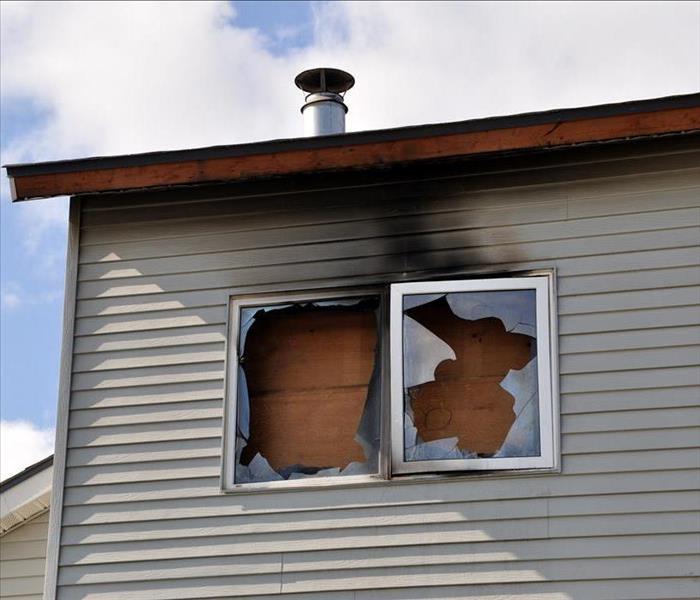 Board up services to a home in Boca Grande, FL.
Board up services to a home in Boca Grande, FL.
Fire Cleanup Process
If your home has recently sustained smoke damage or soot damage, it’s important to call fire restoration experts in Boca Grande, FL. Unless you have professional tools and expertise at your disposal, it can be nearly impossible for you to effectively get rid of the damage and odor on your own. Wondering what happens during the typical smoke cleaning process? Here’s what you can expect.
1. Thorough Inspection
Before beginning the cleanup and restoration process, professional fire restoration experts will first thoroughly inspect the damage and make an assessment. Once this process is complete, a plan of action can be created.
2. Board-Up Services
Fire damage frequently breaks or damages windows, doors, walls, and roofs. When these crucial exterior elements are damaged, they expose the interior of the home to the elements. During the professional smoke restoration process, board-up services are provided as needed to maintain security and prevent damage.
3. Water Removal
If the fire in your home was put out with water, there is probably still residual moisture in your home. Fire restoration services remove excess water and dry the area with professional-grade air movers and dehumidifiers to minimize water damage.
4. Smoke Removal
Smoke damage can be stubborn and pervasive. Fortunately, fire restoration professionals have specialized equipment that can remove soot and smoke from various surfaces in the home.
5. Cleaning
Once water and smoke have been removed, professional cleaning services can be performed. During this process, indoor structures and belongings are cleaned with various techniques and products. Even odors are removed with the help of industrial fogging equipment and air scrubbers.
6. Restoration
The final step to restoring smoke and fire damage is restoring all areas that need it. As part of the restoration process, new carpet may be installed and drywall may be replaced.
As you can see, it would be practically impossible for a homeowner to do all these steps alone. If you’re feeling overwhelmed by smoke damage in your home, take some of the burdens off your shoulders by letting professional fire restoration experts repair the damage.
3 Tips for Learning About Commercial Flood Insurance
7/13/2021 (Permalink)
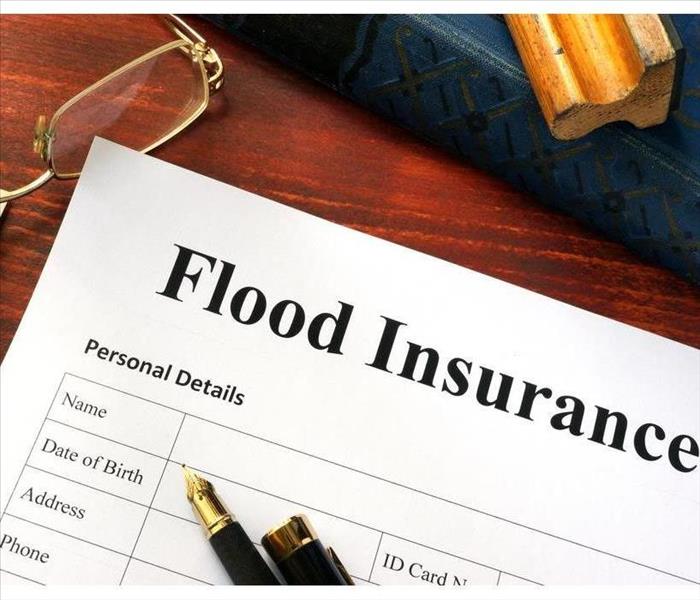 Flood insurance can be a vital component of a protection plan for your business.
Flood insurance can be a vital component of a protection plan for your business.
How and When To Use a Flood Policy
Your Placida, FL, business is likely a large investment for you, both financial and emotional, so you probably go to great lengths to protect it. Smoke detectors, security cameras and business interruption insurance might all be part of your protection plan. However, if you have not added flood insurance to this strategy, you might be facing a considerable gap in your company’s coverage. Learning the basics about how and when to use a flood policy may help you protect your business to the fullest.
1. Assess Your Risk
Before you purchase insurance, it is a good idea to gauge your building’s risk of being damaged by such an event. For example, does your company utilize an entire structure or only one floor? Which floor is it located on? Do you use the building’s basement for storage? Each of these circumstances can affect your risk factor, so you may want to ask yourself these questions before you look for a policy.
2. Know the Law
If you rent your building or are currently under a mortgage and it sits in a high-risk area, you might be required to add flood coverage onto your commercial insurance policy. Most basic policies do not include compensation in case of flooding, especially when it occurs as the result of a natural disaster. You may want to check with your lender, so you are not operating your business without the proper coverage.
3. Take Time To Prepare
Look into flood insurance before the rainy season starts, so you have coverage in plenty of time. Consider bundling this task with finding storm damage and restoration service so you can feel confident that your business is fully protected from flooding. Most policies take about 30 days to kick in, so you might want to start shopping for a policy several months before the flood season arrives.
Flood insurance can be a vital component of a protection plan for your business. Choose a policy carefully and give yourself plenty of time to look over the fine print so you can be assured you are paying for the best protection possible.
3 Parts To Check When a Commercial Toilet Keeps Running
7/9/2021 (Permalink)
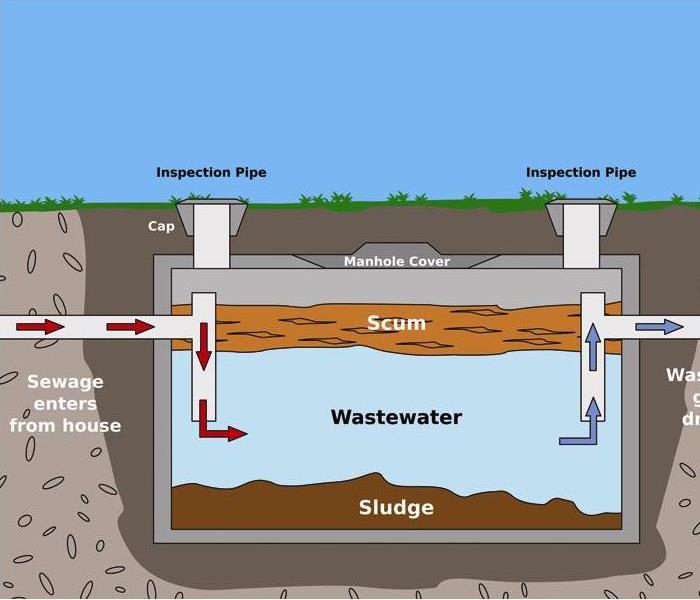 What to do when your toilet keeps running.
What to do when your toilet keeps running.
Your commercial building’s toilets need to run efficiently for the comfort of your employees and customers. However, when a plumbing issue like a toilet overflow happens, it can be unpleasant for everyone. This problem may be caused by a variety of issues, but some can be fixed without the assistance of a plumber. If a toilet keeps running, there are several parts you can check before you call in a flood damage and cleanup service to ensure your bathrooms are properly dried and deodorized after an overflow.
1. The Gasket
Once you turn off the water, the first step to take is to open the winter flushometer. This is the part that causes a commercial toilet to flush efficiently. Use a screwdriver and a wrench to remove this unit’s lid. The gasket is usually located directly under the lid. If it contains a lot of debris or buildup, carefully remove and clean the gasket thoroughly.
2. The Weep Hole
A commercial toilet’s weep hole controls its suction, so when it gets clogged, this may affect water flow and cause a continuous flush. When you remove the toilet’s gasket, take a close look at this small hole. Clean it carefully with a slim tool and ensure all the sediment and other debris is cleared out. This may stop a toilet from flushing constantly and prevent a future toilet flood.
3. The Flange Cover
If this part is loose or corroded, it may be affecting the unit’s proper operation and contribute to a toilet overflow. Note how much water you find under the cover. If there is enough to run over when you remove it, there may be a leak in the gasket or the cover might be faulty, and one or both could need replacing.
When your commercial building experiences a toilet overflow, it can be embarrassing and unpleasant. However, you may be able to repair it by checking and cleaning a few important parts inside the unit to prevent future floods.
Getting Standing Water Out of Your Building
6/25/2021 (Permalink)
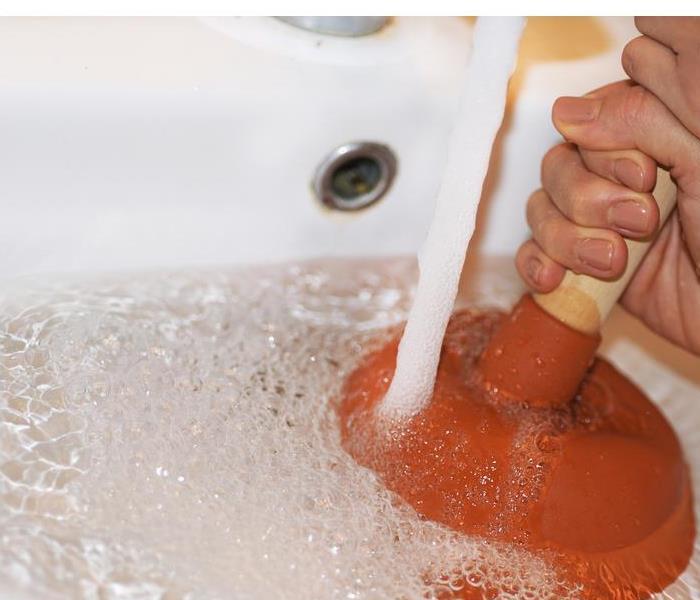 How to get standing water out of your building.
How to get standing water out of your building.
When a storm passes through you never know what to expect. Your commercial building could be left untouched, or you may have to deal with standing water in your lower levels. When the damage is more severe, you have to know what to do next. Calling in a storm restoration professional can help you react quickly and smartly. Removing standing water from a building requires the use of special equipment and fast actions.
Know What To Use
Standing water can lead to major structural problems and mold growth if allowed to linger in your building for too long. Because the issues can be huge, you need to know what equipment to use. Often, this type of remediation requires the following:
• Truck mounts
• Trash pump
• Dehumidifiers
This commercial-grade machinery can pump out liquids, sludges and solids, which means you don't have to worry about sifting through the dirty water to let the machine run smoothly. Instead, the professionals come in, hook up the hoses and start pumping out your unwanted water.
Know How To Prepare
Once the water has been drained out of your building, you likely don't want to repeat the process ever again. While the professionals can do a good job of helping you dry out the space, it requires a lot of work and can cause your business to lose production time. You can reduce the chances of standing water filling up your building after a storm by installing a sump pump. This pump sits in a hole and works to remove water as it starts to fill up a space. In other words, it works to stop flooding before it leads to standing water.
Storms can often leave you surprised. No one expects to find two feet of standing water in his or her building, but it does happen. If you ever find this unpleasant surprise on your property, you need to hire someone who has the equipment needed to remediate it.
4 Essential Ways of Protecting Your Office From Fire
6/18/2021 (Permalink)
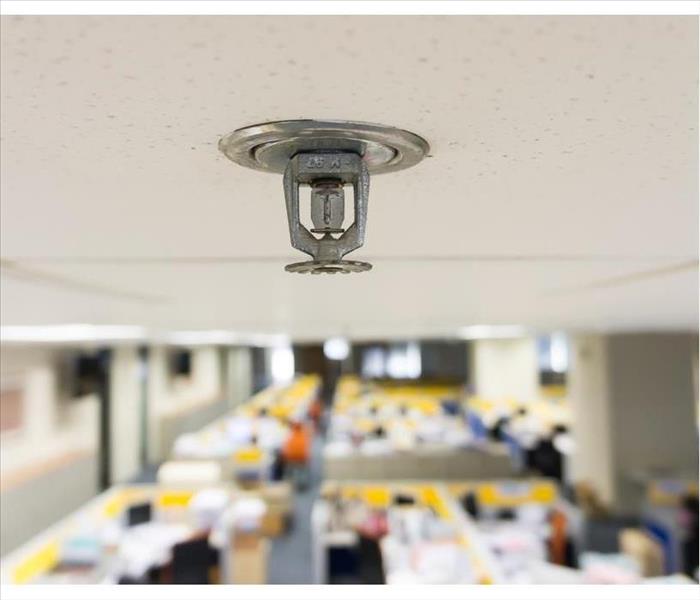 Install a fire sprinkler system if you don't have them already.
Install a fire sprinkler system if you don't have them already.
Fire Preparation
As an office manager in Englewood, FL, one of your primary duties is to protect employees from fires. Executing smart fire preparation tactics can help achieve this task. Here are four areas of focus that can assist in keeping your building free from fire damage and needing an intensive rebuild from an experienced commercial restoration company.
1. Install Fire Suppression Equipment
No matter what the law dictates, you need to have the proper fire-retardant infrastructure. Install a sprinkler system, smoke alarms, and smoke detectors if you don't have them already. A fire safety professional can help you determine what combination of safeguards is best for your location. Check that fire extinguishers are functioning and reside in key locations.
2. Review Electrical Systems
Electricity is a common source of indoor blazes. Good fire preparation involves making sure currents are not a danger. Move appliances away from walls so that there is less risk of overheating. Use power strips and extension cords when necessary. Have an electrician review your building for frayed wires and improper connections.
3. Store Combustible Materials
Flammable materials must be carefully stored. Never put combustibles in boiler rooms or near exits where someone could knock them over. If you have the option, place volatile substances outdoors. Be conscientious about keeping burnable materials, such as cardboard boxes and printer paper, away from anything that could ignite.
4. Perform Building Maintenance
Get your maintenance person to assist you with disaster preparation activities. Make certain that fire lanes are clear and hydrants are not being blocked. Dedicate space in your parking lot for emergency personnel and remind employees to never park in that spot. Assure that the sign identifying your office is easily readable and unobstructed so that firefighters and medical professionals have no trouble locating you.
Fire preparation is an essential task for any office administrator. Use the following guidelines to help prevent infernos from engulfing your workspace.
Should a Business Carry Renter's Insurance?
6/18/2021 (Permalink)
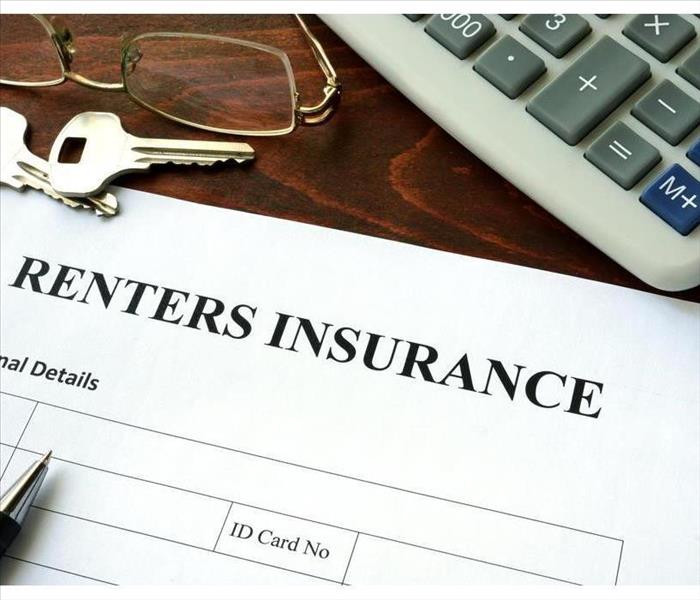 Most small businesses will need some form of renter's insurance.
Most small businesses will need some form of renter's insurance.
Most small businesses don’t own the land they sit on. If your business rents space in Manasota Key, FL, you might consider renter's insurance. This type of policy is tailored for commercial tenants who need three layers of coverage:
- Liability
- Company property
- Loss of use
Doesn’t the Landlord Provide Insurance?
Some landlords provide a certain amount of coverage for tenants. However, that’s usually the exception. Business tenants are legally considered to have a higher degree of sophistication, so they’re generally responsible for their own insurance coverage.
What Does Renter's Insurance Cover?
Any peril covered by standard property insurance is typically covered by a tenant’s policy. The key difference is that the contents of the building are covered, not those items considered part of the building.
Just like a standard property insurance policy, it also doesn’t usually cover flood damage. If you have a flood and it isn’t covered by your insurance, you need a flood damage restoration expert who specializes in a “restore versus replace” mentality to make the process affordable.
Liability for incidents on your property is typically included. Running a business without liability insurance is incredibly risky and normally prohibited by lenders or investors. Renter’s policies also usually cover the move to a new location or the loss of use while your establishment is being restored.
Does It Cover Income Loss?
Definitely not – at least, not without a rider. You need business income interruption insurance to cover lost revenue. This is almost always worthwhile if you can afford it since around 90% of businesses eventually fail without it if they’re forced to close for a disaster.
What Perils Does It Cover?
All the disasters named in your policy would be covered. This typically includes fire, wind, storms, theft and vandalism. The liability portion covers most instances of injury excluding gross negligence on your part. It should be considered the equivalent of standard property owner’s insurance in most ways. However, you should still read the policy since every company has differences.
Most small businesses will need some form of renter's insurance. Call around to find the best price and ideal coverage for your small business.
How To Handle Residential Mold Growth
6/18/2021 (Permalink)
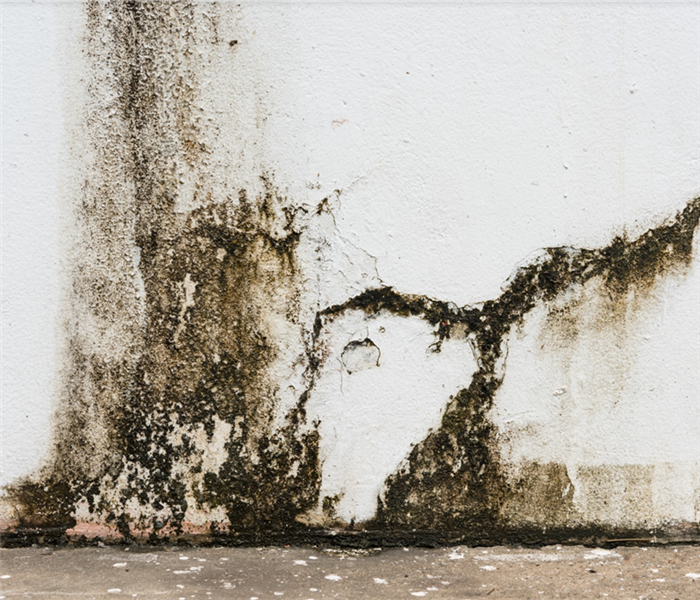 Mold damage in a North Port, FL home.
Mold damage in a North Port, FL home.
Mold is a sneaky, silent form of fungus that can grow anywhere at any time. The introduction of a water source can cause mold to multiply exponentially and spread rapidly throughout your home. If you have recently experienced a leak in your roof or your plumbing, it is essential to take proper precautions to prevent excessive damage to your property. Read on to learn more about mold growth and what to do if you suspect signs of a problem in your home.
What Is Mold?
Mold originates in the form of tiny, microscopic spores that are omnipresent. These spores can enter your home in various ways:
- Through open windows and doors
- Via your air conditioning unit
- By attaching to your clothing or pet hair
Mold spores thrive in high humidity, and they have the potential to colonize when exposed to water. Therefore, it is crucial to investigate and repair household leaks and water damage before the mold growth becomes unmanageable.
What Should You Do While Waiting for Help?
Mold remediation specialists are available to assist in the event of an uncontrollable household mold problem. While waiting for them to arrive, steer clear of the infested areas, and turn off all cooling and heating systems. Further, turn off any water sources that could be contributing to leaks.
What Should You Not Do?
While waiting for professionals in North Port, FL, to assess your damage, never attempt to move or clean the mold. Household cleaners and bleach only exacerbate the problem. Further, don't try to blow the mold away with air or blot it with a towel. Leaving the mold in its present condition will allow the specialists to best treat it effectively and efficiently.
Mold growth, while stubborn and troublesome, can be remediated and restored by professionals. Following proper mold protocols will allow specialists to eradicate your home, leaving it clean and mold-free.
3 Steps for Reducing Water Damage After a Flood at Your Business
6/3/2021 (Permalink)
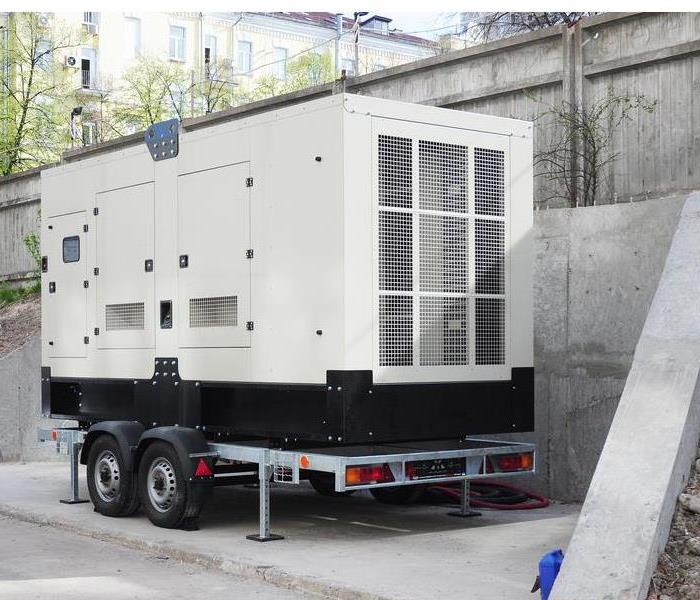 Flooding at commercial buildings!
Flooding at commercial buildings!
When your commercial building is damaged by flooding, it can be difficult to know where to begin with cleanup efforts. Waterlogged drywall, ruined carpeting and damaged machinery may only be a few issues you have to deal with. However, there are a few steps you can take to begin the recovery process, and knowing some helpful damage tips may give you peace of mind as you work to restore your business.
1. Reduce Humidity Levels
After a flood, the humidity levels in your building may spike due to increased water vapor in the air. This may accelerate mold growth, especially in the case of black mold. Because this type of fungus can spread quickly, it is wise to lower humidity any way you can. Open the windows, run fans and turn on your building’s air conditioner if you have been told it is safe to do so. These damage tips may help you keep the threat of mold at bay until help arrives.
2. Call for Professional Flood Mitigation
If a pipe burst in your employee restroom and caused a flood, you may believe there is no hurry in calling for cleanup because the damage has already been done. However, calling in a flood damage and restoration company as soon as you can may reduce the risk of long-term problems, such as mold growth and structural weakness. Flood technicians might also be able to prevent the spread of flood waters to other areas of your building and prevent them from reaching major systems, such as electrical fuse panels.
3. Sort and Set Aside Items for Restoration
Flood technicians may be able to offer you cleaning tips and restoration options for your inventory or office equipment. While not all items may be salvageable, having assistance during this process can help you feel more confident about recovery.
Facing a flood at your, business can be a stressful experience. However, being aware of a few helpful damage tips can give you the peace of mind you need to begin cleanup and restoration efforts.
Why Does the Sewer Back Up After a Storm?
6/3/2021 (Permalink)
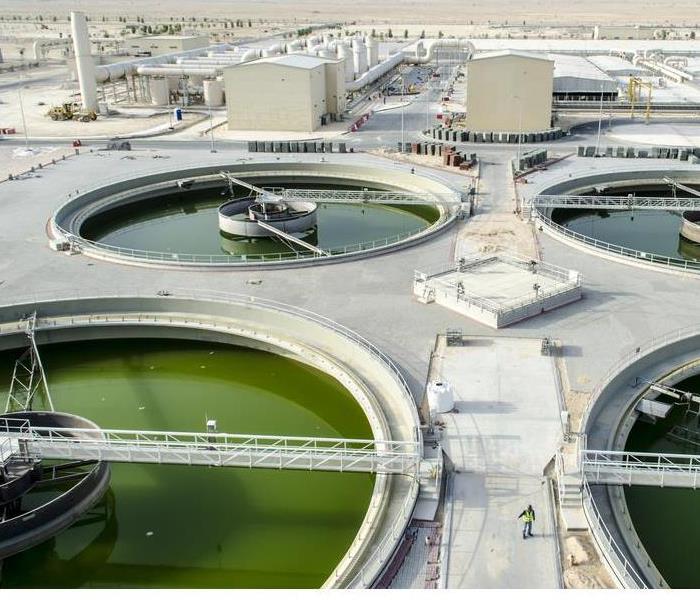 Sewage system.
Sewage system.
As a commercial building owner in, you are responsible for taking care of your property after a storm. You have to know who to call to take care of a problem. When you first enter your building, you may notice a foul, sewer smell. Sewer backup during a storm does not always happen, but it can. You may have to deal with this problem for the following reasons:
• Excess water
• Blockages
• Breaks
No matter why you have sewage seeping into your building, you may want to call in a commercial storm remediation team right away.
Excess Water
Storms are often associated with rain water. When there is a lot of water falling at once, the ground may not be able to hold it all. As the water table rises, flooding happens all over the area. Not only does the rising water table push water into basements and low-lying areas, but it also causes the sewer to run out of space. When the sewer cannot go down, it must come up.
Blockages
Storms can also lead to blockages in your pipes or in other parts of the sewer system. When rocks and other debris are washed into the sewer, it may block up some of the piping. This again leaves the traveling sewage with few options. Because it cannot go forward, you may have to deal with a sewer backup.
Breaks
When trees and powerlines are downed, sewer lines can get broken. When these lines are broken, you may have to deal with contaminated, black water seeping into your commercial building. A break may take a while to take care of, so your sewage may have to be turned off until the problem can be properly addressed.
It is never fun to deal with a sewer backup. When this issue is accompanied by other storm damage, you may feel overwhelmed and worried without the help of a team of experts.




 24/7 Emergency Service
24/7 Emergency Service



















